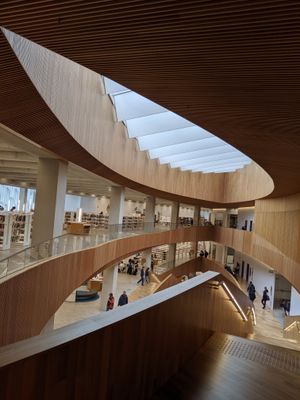Stories need hooks, and the Economist has one. Libraries versus conversations. Make that big-assed threaded conversations.
Architecture follows metaphor, says David Sifry of Technorati, and he goes on to suggest that the search engines were built on the metaphor of the library.
As librarians, Mr Sifry acknowledges, Google and Yahoo! are “brilliant” – he has no intention whatsoever of competing with them in general web search. His idea for Technorati is subtly different, but has huge implications. Mr Sifry starts out with a metaphor for the web not as a library but – slipping into some technical argot common in Silicon Valley – “a big-ass threaded conversation”. Or, more poetically, a “river of human chatter”, constantly joined by other creeks and brooks and ever flowing. And whereas a library is by tradition a place where people whisper, Mr Sifry’s internet is a cheerfully noisy place. [Face value | The life and soul of the internet party | Economist.com]
When it comes to blogs and conversation, the ping is the thing: blogs update various services as entries are published. And this explains the acquisition elsewhere this week of weblogs.com by Verisign. Verisign talks about how it makes available ‘intelligent infrastructure services’ to network applications. They are staking a claim to provide ‘intelligent infrastructure’ which sustains the fabric – the ping network – of blog connectedness and real-time availability.
Further on search engines and libraries: from The Search by John Battelle:
In short, the search engine of the future isn’t really a search engine as we know it. It’s more like an intelligent agent – or as Larry Page told me, a reference librarian with complete mastery of the entire corpus of human knowledge. The Search, p.252]
YAGWALLM – yet another group with a library like mission.
Ping and crawl, alert and search: they make connections that are changing behaviors and expectations. Whether or not you describe Google or Yahoo as library-like, though, should be a less important issue to us than figuring out which services libraries interact with these connected spaces.



